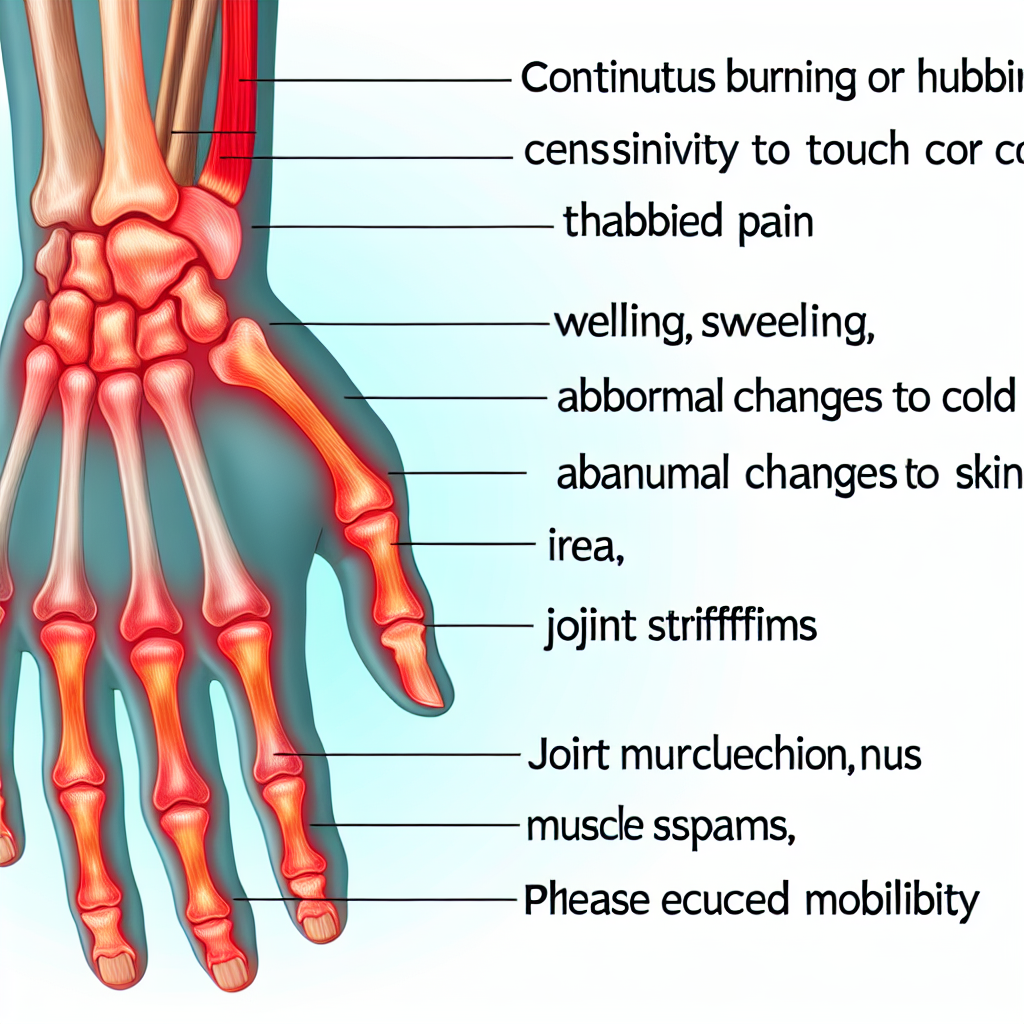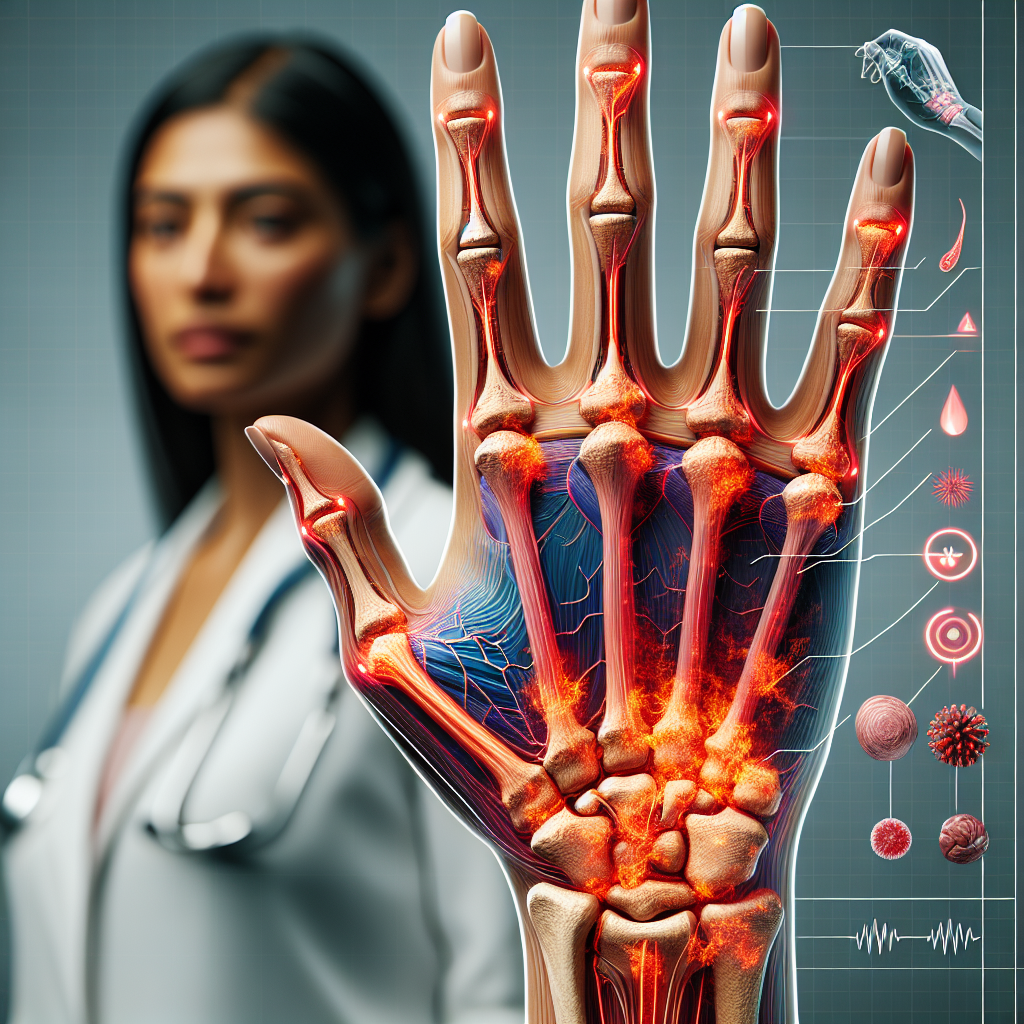Hand Complex Regional Pain Syndrome is a perplexing condition that affects the hand, often causing significant discomfort and functional limitations. Patients and caregivers alike seek clear, informative guidance on this syndrome to better understand its origins, symptoms, and effective management strategies. The following article provides a comprehensive examination of Hand Complex Regional Pain Syndrome, delving into its fundamental aspects while offering insights into anatomy, causes, symptoms, diagnostic testing, and treatment approaches.
By approaching the topic with clarity and empathy, the discussion will aim to demystify this condition and create a resource that empowers patients, families, and healthcare providers to navigate the challenges associated with Hand Complex Regional Pain Syndrome. The information is structured to be accessible, yet detailed enough to convey the complexities and nuances of the syndrome.
What Is Hand Complex Regional Pain Syndrome?
Hand Complex Regional Pain Syndrome is a chronic pain condition that typically manifests following an injury or trauma to the hand or arm, though sometimes it can occur without a clear trigger. This syndrome is characterized by prolonged pain that is disproportionate to the original injury, accompanied by a variety of sensory, motor, and autonomic disturbances. Patients often experience intense burning sensations, tingling, and sensitivity to touch, along with changes in skin color, temperature, and swelling.
This condition involves abnormal responses from the nervous system, leading to pain that persists long after the initial injury has healed. Hand Complex Regional Pain Syndrome can progress through different stages – from acute, throbbing pain to a more chronic, persistent discomfort – affecting daily activities and quality of life. Understanding what it entails is the first step towards effective management and seeking appropriate intervention.
Anatomy of the Hand Complex Regional Pain Syndrome
To grasp how Hand Complex Regional Pain Syndrome affects the body, it is important to understand the anatomy involved. The syndrome primarily involves nerves, blood vessels, and the musculoskeletal system of the hand. Nerve fibers in the hand transmit pain signals, while blood vessels regulate blood flow, temperature, and inflammatory responses. When these systems misbehave due to Hand Complex Regional Pain Syndrome, normal signals become distorted, leading to pain and other symptoms.
The hand’s anatomy is highly complex, comprising bones, muscles, tendons, ligaments, and an intricate network of nerves and blood vessels. In cases of Hand Complex Regional Pain Syndrome, abnormalities may develop within these networks. For example, autonomic nerves may trigger changes in skin temperature and color, while somatic nerves amplify pain signals. Such changes can contribute to stiffness, swelling, and reduced range of motion. The interplay between these anatomical elements underlies many of the challenges faced by patients.
What causes Hand Complex Regional Pain Syndrome?
The exact cause of Hand Complex Regional Pain Syndrome is not fully understood, but it is known to often follow an injury, surgery, or prolonged immobilization. The condition appears to result from an abnormal response of the body’s nervous system to such triggers. When the normal healing process goes awry, it can set off a cascade of events leading to chronic pain and hypersensitivity.
Key factors that may contribute include:
- Trauma or Injury: A hand fracture, sprain, or soft tissue injury can sometimes precipitate the syndrome.
- Surgery: Post-surgical complications in the hand or arm may trigger onset.
- Infection: In rare cases, infections that affect the hand can lead to abnormal nerve responses.
- Immobilization: Extended periods of immobility after injury may lead to changes in nerve functioning.
- Nerve Damage: Damage to the sympathetic nervous system can contribute to the development of Hand Complex Regional Pain Syndrome.
Stress and psychological factors, while not direct causes, may exacerbate the symptoms or the perception of pain. The complexity of the syndrome lies in how these elements interplay to produce a constellation of symptoms that go beyond the initial injury, making it challenging to pinpoint a single cause in many cases.
What are the Symptoms of Hand Complex Regional Pain Syndrome?
Symptoms of Hand Complex Regional Pain Syndrome can vary widely among individuals but generally include severe pain that is out of proportion to the initial injury. Pain may be described as burning, throbbing, or stabbing. It is often accompanied by hypersensitivity, where even a light touch or breeze can trigger pain responses.

Common symptoms include:
- Persistent Pain: Unrelenting and often intense pain in the hand and arm.
- Allodynia: Pain from stimuli that usually are not painful, such as a light touch.
- Hyperalgesia: Increased sensitivity to painful stimuli.
- Swelling: Noticeable edema in the affected hand.
- Color Changes: Skin may appear red, purple, pale, or blotchy.
- Temperature Changes: The affected area might feel unusually warm or cool compared to the unaffected side.
- Stiffness and Reduced Mobility: Difficulty moving fingers or gripping objects.
- Tremors or Muscle Weakness: In advanced stages, patients may experience tremors or a reduction in hand strength.
Additionally, patients might observe changes in hair and nail growth, such as brittle nails or excessive hair growth in the affected region. These symptoms can lead to significant distress and impact everyday activities. Since symptoms often worsen with movement or exposure to temperature changes, managing daily routines can become a challenge.
Special test of Hand Complex Regional Pain Syndrome
Special tests are used by physiotherapists and clinicians to assess for Hand Complex Regional Pain Syndrome. These tests aim to identify changes in sensation, motor function, and autonomic nervous system responses. While no single test can definitively diagnose the syndrome, a combination of assessments can provide supporting evidence. Below is a list of special tests and instructions on how to perform them:
Two-Point Discrimination Test:
- Procedure: Use a caliper or a blunt instrument with two points to gently touch different parts of the hand.
- Purpose: Evaluates tactile acuity. Patients with Hand Complex Regional Pain Syndrome might have altered sensory perception.
Vasomotor Response Test:
- Procedure: Compare skin temperature and color between the affected and unaffected hand using a thermometer or visual inspection.
- Purpose: Identifies autonomic changes common in Hand Complex Regional Pain Syndrome, such as temperature asymmetries.
Trophic Changes Inspection:
- Procedure: Visually inspect the skin, nails, and hair on the affected hand for changes.
- Purpose: Detects alterations in hair growth, nail texture, and skin dryness that may accompany the syndrome.
Range of Motion Testing:
- Procedure: Ask the patient to move their fingers, wrist, and hand through various motions.
- Purpose: Assesses for stiffness, pain on movement, or reduced mobility.
Grip Strength Assessment:
- Procedure: Use a dynamometer or ask the patient to squeeze your hand with the affected side.
- Purpose: Measures loss of strength that may be associated with the syndrome.
Nerve Conduction Studies:
- Procedure: Conducted by specialists, electrodes are placed on the skin to measure how nerve signals travel.
- Purpose: Identifies abnormalities in nerve function related to Hand Complex Regional Pain Syndrome.
Cold Sensitivity Test:
- Procedure: Gently expose the affected hand to a cool object or environment.
- Purpose: Evaluates changes in sensitivity to temperature, which is common in the syndrome.
Tactile Hypersensitivity Check:
- Procedure: Lightly stroke various areas of the hand with a soft brush or cotton.
- Purpose: Assesses for allodynia, where normally non-painful stimuli cause pain.
These special tests provide valuable insights into the condition and guide further diagnostic and treatment plans. Each test should be conducted with care and empathy, considering the discomfort experienced by patients with Hand Complex Regional Pain Syndrome.
How do we Treat Hand Complex Regional Pain Syndrome
Treatment of Hand Complex Regional Pain Syndrome requires a multidisciplinary approach. It involves physical therapy, medication, psychological support, and sometimes surgical interventions. Each treatment plan is individualized based on the severity of symptoms, patient history, and progress over time. The primary goal is to manage pain, restore function, and improve quality of life while addressing any underlying issues that may be contributing to the condition.
Hand Complex Regional Pain Syndrome Treatment Approaches
Managing Hand Complex Regional Pain Syndrome effectively starts with a comprehensive assessment. Physiotherapists and other healthcare providers work together to create tailored rehabilitation programs that may include:
Physical Therapy:
- Gentle exercises to improve range of motion and reduce stiffness.
- Gradual desensitization techniques to decrease hypersensitivity.
- Strength training to regain hand function.
- Use of modalities like heat or cold therapy to manage symptoms.
Occupational Therapy:
- Assisting patients with activities of daily living.
- Adapting tools and tasks to reduce strain on the hand.
- Ergonomic advice to prevent further injury.
Medications:
- Pain relievers such as NSAIDs to manage inflammation.
- Neuropathic pain medications like gabapentin or amitriptyline.
- Topical creams that soothe hypersensitivity and reduce local pain.
Psychological Support:
- Cognitive Behavioral Therapy (CBT) to address anxiety and depression related to chronic pain.
- Stress management techniques.
- Support groups to share experiences and coping strategies.
Interventional Procedures:
- Nerve blocks or sympathetic nerve blocks to interrupt pain signals.
- Intravenous ketamine infusions in severe cases.
- Electrical nerve stimulation (TENS) to modulate pain signals.
Adjunct Therapies:
- Mirror therapy to re-train the brain’s perception of the affected hand.
- Graded motor imagery to improve motor function and reduce pain.
- Acupuncture or massage to alleviate tension and pain.
The treatment of Hand Complex Regional Pain Syndrome is often a long-term process requiring patience and persistence. Rehabilitation is typically progressive, starting with gentle interventions and gradually advancing to more demanding exercises and therapies as the patient improves. Multidisciplinary care ensures that all aspects of the condition – pain, movement, and emotional well-being – are addressed in a cohesive manner.
Hand Complex Regional Pain Syndrome Differential Diagnosis
When diagnosing Hand Complex Regional Pain Syndrome, healthcare providers also consider other conditions with overlapping symptoms. Differential diagnosis is critical to rule out conditions such as:
- Peripheral neuropathy from diabetes or other systemic diseases.
- Carpal tunnel syndrome or other nerve entrapment syndromes.
- Arthritis or inflammatory joint diseases.
- Tendonitis or ligament injuries.
- Vascular disorders such as Raynaud’s phenomenon.
- Infections of the hand that could cause similar pain and swelling.
A thorough clinical evaluation, combined with imaging studies and nerve conduction tests, helps differentiate Hand Complex Regional Pain Syndrome from these other conditions. By considering the full clinical picture – history of trauma, symptom progression, special test outcomes – professionals can more accurately pinpoint the cause of a patient’s symptoms and tailor treatment accordingly.
Hand Complex Regional Pain Syndrome Prognosis and Expectations
The prognosis for Hand Complex Regional Pain Syndrome varies greatly among individuals. Some patients respond well to early intervention and comprehensive treatment plans, while others may experience persistent symptoms despite intensive efforts. Early diagnosis and a proactive treatment strategy greatly improve the chances of a positive outcome.
In managing expectations, it is important for patients to understand that recovery may be gradual. The journey often involves:
- Patience: Progress can be slow, and setbacks may occur.
- Consistency: Regular therapy sessions and home exercises are key to improvement.
- Adaptability: Treatment plans may evolve as symptoms change and new challenges arise.
- Communication: Ongoing dialogue with healthcare providers ensures that pain management strategies remain effective and adjustments can be made as needed.
Over time, many patients with Hand Complex Regional Pain Syndrome see significant improvements in pain reduction and hand function. While some may continue to experience intermittent pain or sensitivity, ongoing management strategies can help maintain function and quality of life.
In summary, understanding and effectively managing Hand Complex Regional Pain Syndrome requires a holistic and informed approach. With the right combination of therapy, support, and medical intervention, patients can work towards reducing pain, improving hand function, and regaining confidence in their daily activities.
